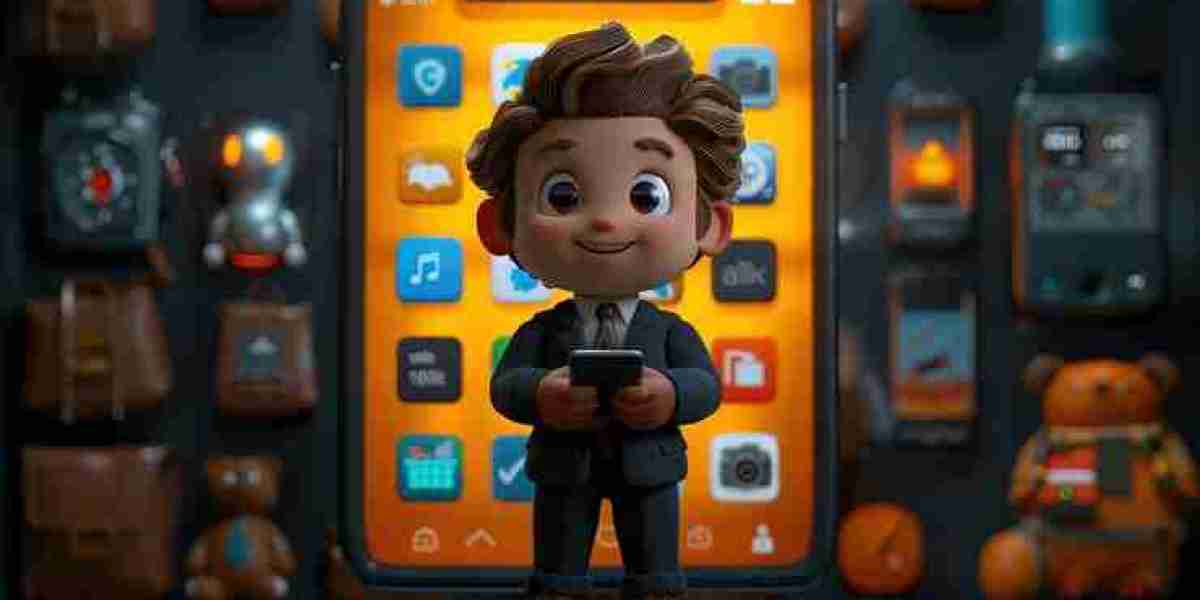Creating 3D animations for mobile games is an intricate and highly rewarding process that brings immersive, visually stunning worlds to life on mobile devices. With the increasing demand for high-quality gaming experiences, 3D animations have become an essential element in game design. Whether it's the fluid movements of a character, the dynamic effects of explosions, or the detailed environments, 3D animations add depth and realism to the virtual world. In this blog, we'll explore the steps involved in creating 3D animations for mobile games and how professionals can make the most of 3D animation services.
Understanding the Mobile Gaming Landscape
The mobile gaming market is booming, with millions of players engaging with games on smartphones and tablets daily. As mobile devices become more powerful, the expectation for graphics and animations has risen. Mobile game developers are increasingly relying on sophisticated 3D animations to provide a visually engaging experience while ensuring smooth performance across various devices.
Creating 3D animations for mobile games requires balancing high-quality visuals with the limitations of mobile hardware. Since mobile games must run efficiently on a range of devices with varying specifications, game developers must optimize animations to avoid lag and ensure a seamless experience.
The Basics of 3D Animation for Mobile Games
Before diving into the technical steps, let's briefly outline the key components of 3D animation for mobile games:
Modeling: The first step in 3D animation involves creating the 3D models of characters, objects, and environments. Artists use specialized software to craft the shapes, textures, and details of these assets.
Rigging: Once the models are created, they need to be rigged for animation. Rigging involves adding a skeleton structure to the 3D model, allowing animators to control its movements.
Animation: This is the process of bringing the rigged model to life by defining its movements. Animations can be keyframed (setting specific points in time) or generated procedurally (using algorithms to generate movements).
Rendering: After animation, the scenes need to be rendered, where 3D data is transformed into 2D images that can be displayed on a screen.
Optimization: Since mobile devices have limited processing power compared to gaming consoles or PCs, it's crucial to optimize animations to maintain performance while keeping quality high.
Now, let’s take a look at how to approach the creation of 3D animations for mobile games.
Steps to Create 3D Animations for Mobile Games
1. Choosing the Right Animation Software
The choice of animation software is one of the most critical decisions in the animation creation process. Professional 3D animation studios, like those in Los Angeles, use advanced tools to create high-quality game animations. Some popular 3D animation software includes:
- Autodesk Maya: Widely used in game development, Maya is great for modeling, rigging, and animating 3D assets.
- Blender: An open-source software that is gaining popularity due to its robust toolset and flexibility.
- 3ds Max: This software is often used for modeling and animation, especially in the video game and film industries.
- Unity and Unreal Engine: While primarily game engines, both Unity and Unreal support robust 3D animation creation and are integral to many mobile game developers.
These tools provide the functionality needed to create and animate 3D models, but the choice ultimately depends on the specific requirements of the game and the skill set of the development team.
2. Designing 3D Assets for Mobile Games
Once the software is selected, the next step is to design the 3D assets that will appear in the game. Whether creating a character, a building, or an environmental object, the design phase is where the visual direction of the game is set. A skilled artist should pay close attention to the polygon count, texture details, and overall complexity to ensure the assets are optimized for mobile devices.
The goal is to keep the models as lightweight as possible without sacrificing too much detail. Since mobile devices have lower processing power than high-end computers or consoles, reducing the number of polygons in models helps improve performance. At the same time, textures should be applied efficiently to ensure they look good while not taking up too much memory.
3. Rigging and Skinning Models
Once the 3D assets are designed, they must be rigged and skinned for animation. Rigging is the process of adding a digital skeleton to the model, enabling the animator to manipulate the asset’s movements. Skinning refers to attaching the 3D model’s geometry to the rig so that it deforms correctly during animation.
For characters and creatures, rigging becomes crucial because it allows animators to create realistic movements. A character’s bones and joints should be flexible enough to mimic natural movements, such as walking, running, or jumping.
4. Animating 3D Models
Now comes the exciting part—animating the 3D models. Animating in 3D is an intricate process that involves creating a series of keyframes (specific points in time that define the position, rotation, and scale of an object). Animators set keyframes for each motion and let the software generate in-between frames, known as "tweens."
For mobile games, animation needs to be efficient. The key is to use minimal keyframes while maintaining fluid motion. Ragdoll physics and other advanced animation techniques can be used to add realism to interactions and movements. Some techniques used to enhance animation include:
- Inverse Kinematics (IK): This technique allows for more natural animation of characters by calculating joint movements automatically based on specific end positions (e.g., a character reaching for an object).
- Procedural Animation: Using algorithms to generate animations based on parameters, this technique is often used for background actions or repetitive motions (like a swinging door).
- Blend Shapes: These are used for facial animations, allowing for nuanced expressions and emotional responses from characters.
It’s also crucial to maintain consistency and smooth transitions in animations, especially in gameplay where continuous motion is needed. The transitions should feel fluid and responsive, so players experience a polished gameplay loop.
5. Optimization for Mobile Devices
One of the most important aspects of creating 3D animations for mobile games is optimization. Since mobile devices have limited resources, animations need to be optimized for performance. Optimization techniques include:
- Reducing Polygon Count: Keep the 3D models simple with fewer polygons to reduce rendering times and improve the frame rate.
- Texture Compression: Use compressed textures to minimize memory usage while maintaining visual fidelity.
- Efficient Lighting: Mobile devices struggle with complex lighting effects. Use baked lighting and pre-rendered shadows to save processing power.
- Level of Detail (LOD): Implementing LOD ensures that objects farther from the camera are rendered with lower detail, reducing the strain on the mobile GPU.
Additionally, developers should test animations on a range of devices to ensure the game runs smoothly across different hardware specifications.
6. Integration into the Game Engine
Finally, the 3D animations must be integrated into the game engine, such as Unity or Unreal Engine. Both engines support 3D assets and animation integration, making it easy to control the animations within the game environment. Game developers can use animation blueprints or scripts to trigger animations based on player actions (e.g., running, jumping, attacking).
The animation sequence should also be synchronized with the game’s logic, ensuring that animations are played at the right time in response to player input.
Conclusion
Creating 3D animations for mobile games is a multifaceted process that requires expertise in modeling, rigging, animation, and optimization. By utilizing top-tier 3D animation services and collaborating with animation studios in Los Angeles, game developers can create visually captivating and smooth-running mobile games. When combined with efficient 3D product animation services, mobile games can offer players a dynamic, immersive experience that keeps them coming back for more.
Remember, optimizing animations for mobile devices without compromising quality is key to the success of your game. Whether you're an indie developer or part of a larger studio, mastering the art of 3D animation can set your mobile game apart in an increasingly competitive market.







